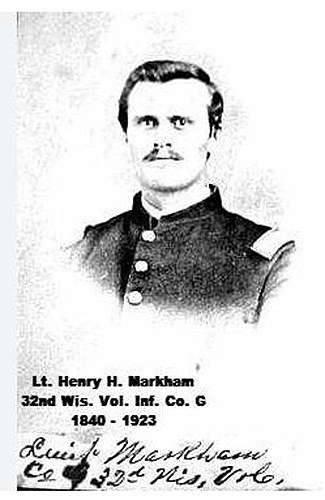
NOW Articles Written By Members
An Argument for Collecting Half Dollars
Late Night and a Russian Type Set
Old Country Coins: Newfoundland’s Rarest 5-Cent
Milwaukee Medals: Fifth Ward Constable
A look back at a common, but classic commemorative – Wisconsin’s Territorial Centennial
A side-tracked story: Mardi Gras Doubloons
A look back at a collecting specialty – the O.P.A. ration tokens of WWII
Bullion And Coin Tax Exemption – Act Now!
Is There A Twenty Cent Piece We Can Add To A Collection
Capped Bust Half Dollars: A Numismatic Legacy
U.S. Innovation Dollars: Our Most Under-Collected Coin?
My 2023 ANA Summer Seminar Adventure
>> More articles in the Archive
For more NOW Articles Written By Members,
Just passing through a short-lived bank
[By Tom Casper #0982]
I recently acquired a Milwaukee bank check where the bank it was drawn from lasted only 12 years. The check is from the Manufacturers Bank of Milwaukee and is dated Aug. 15, 1881. It was a state-chartered bank. It is printed on blue paper with black lettering. In the center is a 2c imprinted revenue stamp, Scott #RN-G1. It never issued any obsolete or national bank notes, and, so, I decided to research.
The bank was incorporated Nov. 1873, this was the same year the Panic of 1873 began. It was a financial crisis that triggered an economic depression in North America and Europe and lasted from 1873 to 1877. The bank address was listed as the Northwest corner of Michigan & Broadway. This is the site of the tragic Newhall House fire on Jan. 10, 1883, which took the life of 70 people. A few months after the fire, the depositors of the bank presented a valuable gold watch to the bank cashier, W.S. Candee, as a mark of their appreciation for the service he rendered them by removing their money from the safe of the bank, which was located in the Newhall House at the time. In the 1877 book, Milwaukee Illustrated, a bank ad showed the address of 365 Brodway (sic) (No. 1, Newhall House). The bank later ceased operations and an article in the Milwaukee Daily Journal newspaper on June 17, 1884, reported the following about the cessation of service for depositors;
“CLOSING OUT A BANK, THE MANUFACTURERS SHUTS UP SHOP AND NOBODY SEEMS TO CARE. Owing to the inability to convert our assets so as to meet the immediate demands of depositors, the board has unanimously resolved to suspend payment. The assets of the bank have been put into the hands of a responsible receiver for the purpose of liquidation.”

The check in question. Supplied image
The payer of the check that is shown is H.H. Markham. Henry Harrison Markham (1840-1923) was born in Wilmington, N.Y., and moved to Wisconsin in 1861. During the Civil War, he enlisted as a private in Company G, 32nd Wisconsin Infantry Regiment, and was promoted to second lieutenant colonel. Markham was part of General William T. Sherman’s “March to the Sea” in 1864. At the Battle of Whippy Swamp, he was wounded in the hip and was later honorably discharged.
After the war, he settled in Milwaukee and studied law, becoming an attorney. He was admitted to the bar in 1867 and practiced law in Milwaukee until 1878. His specialty was gold and silver mining. On May 27, 1876, he married Mary A. Dana in Waukesha. A display ad in the 1880 Milwaukee City Directory shows Markham as one of four directors of the Manufacturers Bank. He left Milwaukee and moved to Pasadena, CA, in 1879 for health reasons and to advance his political career.
Besides investing in various mines, he helped found the Pasadena Public Library and served on the school board, assuming a position of prominence in the community. He again became a bank director. Aware of his leadership capabilities and his interest in the plight of war veterans, Congress elected him as manager of the National Homes for Disabled Soldiers. He served in that capacity until his death. As a Republican, he was elected as a U.S. Representative from California’s 6th District, was later elected Governor of California, and served from 1891-1895.

His notoriety came to an end and he suffered the same fate as the prior bank that he was involved with. The Los Angeles Herald carried the story on April 13, 1907;
“GOVERNOR ONCE, H.H. MARKHAM IS DEEP IN DEBT. Debtors’ Judgements were obtained on a broken mining deal leaving him penniless. Markham was President of both the American Boy Mining Co. and the American Girl Mining Co. The Boy Co. gave money to the Girl Co. The stockholders of both companies were practically the same. The stockholders of the American Boy Mining Co. held Markham responsible in the sum of $119,000 which he was unable to pay. The court also took his beautiful home in Pasadena to satisfy the judgement. He had owned a forty-acre ranch in Riverside which was sold a few weeks prior to fight an appeal in the Supreme Court.”
A promissory note dated 1901 on the letterhead of the American Girl Gold Mining Co. was signed by him and shows he was president of the company. He died following a stroke in Pasadena, California on Oct. 9, 1923, at 82. It appears that many of the mining companies during this time failed. A number of the mining stock certificates I have in my collection have never been redeemed, indicating the investors lost their entire investment and may have had some grief as well.
Have an interesting numismatic topic you’d like to share with your fellow NOW members?
Send your article to evan.pretzer@protonmail.com today!!!